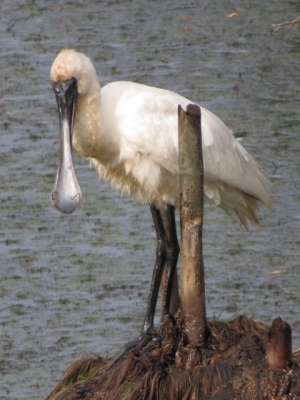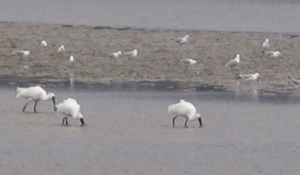Displaying items by tag: Spoonbill
Spoonbills New Zealand
Reports of sightings in the past decade point to a growing population of royal spoonbills in New Zealand. Te Papa bird expert Dr Colin Miskelly backs this up, saying there are signs that the spoonbill, kotuku ngutupapa, is "increasing at a rapid rate".
The first spoonbill sighting was recorded in New Zealand at Castlepoint in 1861.
Sightings increased through the 1900s, with breeding first recorded next to the white heron colony at Okarito, south Westland, in 1949.
Since then it has successfully colonised New Zealand from Australia and is now widespread, breeding on both main islands, and dispersing to coastal sites across the country after the breeding season.
In 1977 the New Zealand population was estimated at 52 birds. The most up-to-date estimate (in 2012) was 2,360 birds, though the population is now thought to have exceeded 3,000.
A colony and nest count during the 2013-14 breeding season found 19 colonies with at least 614 nests.
It breeds in the exposed canopy of tall kahikatea trees, on the ground near estuaries, rivers and harbours, in reeds, in low shrubs, and on steep rocky headlands, tending to breed near white heron and shag colonies.
It prefers freshwater to saltwater but can inhabit both. Royal spoonbill is one of six spoonbill species worldwide but the only one that breeds in New Zealand.
Source: Szabo, M.J. 2013 [updated 2017]. Royal spoonbill. In Miskelly, C.M. (ed.) New Zealand Birds Online. www.nzbirdsonline.org.nz.
Australian invader
Yet another immigrant from Australia, royal spoonbills were known to Maori as kotuku ngutu papa so must have visited here for many years. Their numbers seem to have increased in the early 1940s. Some settled in the Waitangiroto River at Okarito. They have extended their range and now breed in a number of places, including Kapiti Island and Parengarenga and Manakau Harbours. There was a report of a colony up the Waiuku River. Royal spoonbills tend to breed near kotuku, shag and gull colonies. Some nests are high in kahikatea trees, others on low shrubs or on the ground. The birds assemble at nesting sites about October and begin their courting behaviour.
Spoonbills feed on insects, shellfish, small fish and frogs. They are readily identified in the distance by the way they feed, walking and sweeping their spoon bill in an arc, often knee deep in water. They feed day or night, whenever the tide is right.
Spoonbills at Boggy Pond and surrounds
The photo is of spoonbill chicks in a nest early this year. The nest itself is a pretty loose affair of sticks placed in the base of a dead willow tree and surrounded by open water on all sides. As the chicks age the nest becomes a lot whiter, the result of droppings from both the chicks and their parents.
This was the first record of spoonbills nesting at Boggy Pond and only the second for Wairarapa.
They have been seen more often in the wider area over the past few years with the increased area of shallow wetland created by DU’s Wairio restoration project likely to be providing a good reliable food source.
I think, also, that the predator control in the area has been a big part of supporting these nests once they start and giving the youngsters a decent chance of fledging.
We hope that this is the first of many!
Earlier in the year a team took the canoe to chase and spray purple loosestrife.
On the way out we noted a big flock of spoonbills at the northern end of the lagoon and on the way back we came across some nests in the bases of sprayed willows.
We didn’t approach too closely, but through the telephoto it looked like two chicks at least in each.
It was quite a shock to come across these, a pleasant one too, as you’d imagine. This is the second confirmed nesting site at Wairarapa Moana.
We plan to follow up the loosestrife work and will check on these chicks and have a look over a wider area to see if there are more.
I think this is a result of the combination of willow spraying opening up the lagoon and creating the right conditions for nest building and the pest control keeping the nests alive instead of providing food for hungry mammals.
Tony Silbery
Kaiarahi- Koiora Rereketanga (Ranger, biodiversity) DoC.



